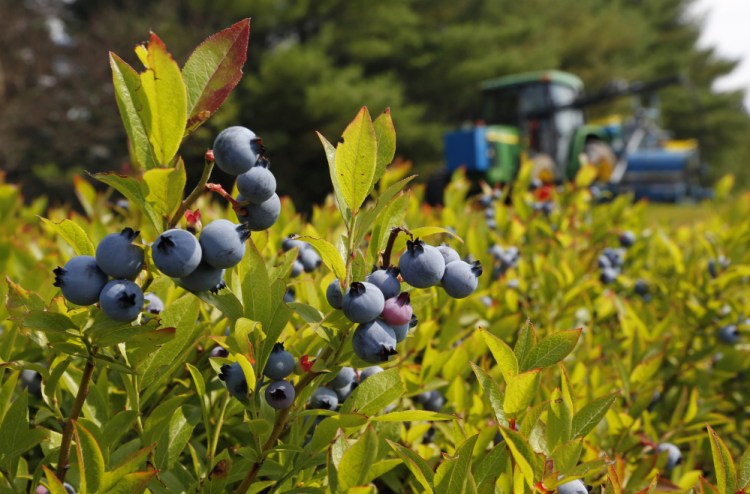Maine’s wild blueberry crop is headed for another big year despite dry weather that has caused some nervousness in the state’s blueberry barrens.
Maine is by far the biggest wild blueberry producer in the United States, and the industry is coming off back-to-back bumper crops of more than 100 million pounds in the past two years.
This year’s total will likely be closer to 90 million pounds, which is still much more than the crop averaged a decade ago, according to the Wild Blueberry Commission of Maine.
The big crops come at a time when prices for blueberries have been somewhat depressed. Frozen wild blueberries dropped from 90 cents per pound in 2011 to 60 cents per pound in 2014.
Another big crop could help keep prices to consumers low, but growers said they welcome another big year anyway.
Ed Flanagan, chief executive officer of Wyman’s of Maine, said advances in irrigation are helping to make a big year possible, but the lack of rain this summer is still concerning.
“That’s changed the outlook from a way-above-average crop to maybe something less,” Flanagan said. “You really want to see a big yield per acre.”
Wild blueberries made up less than one-sixth of the total U.S. blueberry crop in 2014, but they are one of Maine’s most beloved exports, prized for their flavor and antioxidants.
Cultivated blueberries are bigger and more commonly seen in the fresh produce section of grocery stores. Wild blueberries are almost always sold frozen.
In parts of neighboring New Hampshire that have been hit hard by a drought, the network of mostly small, family-run cultivated blueberry farms aren’t faring as well as Maine’s wild crop.
Just last week, Gov. Maggie Hassan sent a letter to the federal government requesting a Drought Disaster Designation for farmers in Grafton, Rockingham and Strafford counties.
Maine’s industry is trying to take advantage of its big crop years by creating more interest in Maine blueberries outside the state, said Nancy McBrady, executive director of the blueberry commission.
“We as an industry are working hard to differentiate ourselves from regular, cultivated blueberries and educate consumers and the wholesale ingredient trade about the benefits of wild blueberries,” she said.
The effort is necessary in part because the big crops in recent years have led to a surplus of berries that has helped hold prices down. Another factor has been the weak Canadian dollar, because Canada also produces wild blueberries.
The U.S. government is spending about $13 million on a plan to help Maine’s blueberry industry by buying some of the surplus crop. Officials announced plans to complete the purchase last month.
Associated Press Writer Michael Casey in Concord, New Hampshire, contributed to this report.
Send questions/comments to the editors.



Comments are no longer available on this story